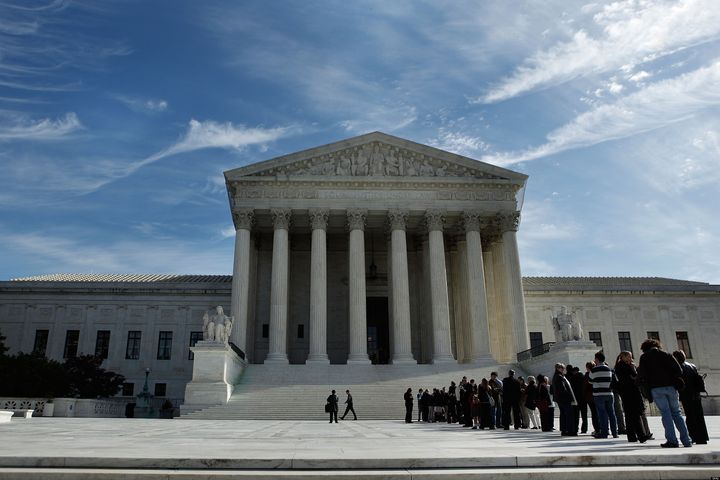
President Barack Obama will choose a nominee to replace retiring Supreme Court Justice John Paul Stevens in "the next couple weeks," an administration official tells the Huffington Post. And to get that person confirmed, aides are already dusting off the playbook used to move Justice Sonia Sotomayor through the Senate last summer.
On Friday, Justice Stevens confirmed what had long been anticipated -- that he would be stepping down from the Court at the end of its current session. The White House was informed of his decision at 10:30 a.m. Fifteen minutes later, White House Counsel Bob Bauer called the president, who was traveling back from Prague on Air Force One, to inform him of the letter.
The retirement sets in motion what promises to be a bitter and feisty confirmation battle over the course of the summer. As it stands now, there is a short list of potential Stevens replacement, but administration aides won't say how many names are on it. Nevertheless, the White House is planning to take the strategy and lessons learned from the Sotomayor debate and apply them to the forthcoming confirmation battle.
"The wagon isn't broken so there is no reason to fix it," said an administration official who noted that Sotomayor's nomination ended up garnering more Republican votes than any other major Obama initiative.
Depending on who is nominated, that strategy involves a heavy emphasis on the nominee's diverse background, framing the choice as someone who's outside the judicial monastery, and repeated focus on the bipartisan support that candidate enjoys. Organizations and congressional offices working on the nomination will be charged with helping drum up support for the choice as well as to echo the White House's arguments. Senate Judiciary Chairman Patrick Leahy (D-VT) will be tasked with running tight, prompt hearings.
"There will be a coordinated effort among Democrats in the Senate, the White House and outside groups," said one Hill aide. "But it will be the White House leading."
Whether the template established by the Sotomayor confirmation process can be duplicated again, however, is a modest gamble. Not all nominees lend themselves to the framing the administration finds favorable. Moreover, the political landscape has shifted since Sotomayor's confirmation.
Supreme Court observers, judicial activists and Hill staff cite four major obstacles for the next nominee.
First, the confirmation process is coming up so close to the 2010 election, turning the nomination into an electoral issue. Second, there is lingering bitterness felt by Republicans over the passage of health care reform. Third, there is a likelihood that the nominee will not have the compelling and historic background of Sotomayor, the first Hispanic Justice on the Court. Fourth, the custom of not subjecting a Supreme Court Justice nominee to a filibuster has been disregarded as the confirmation battles have grown more political.
